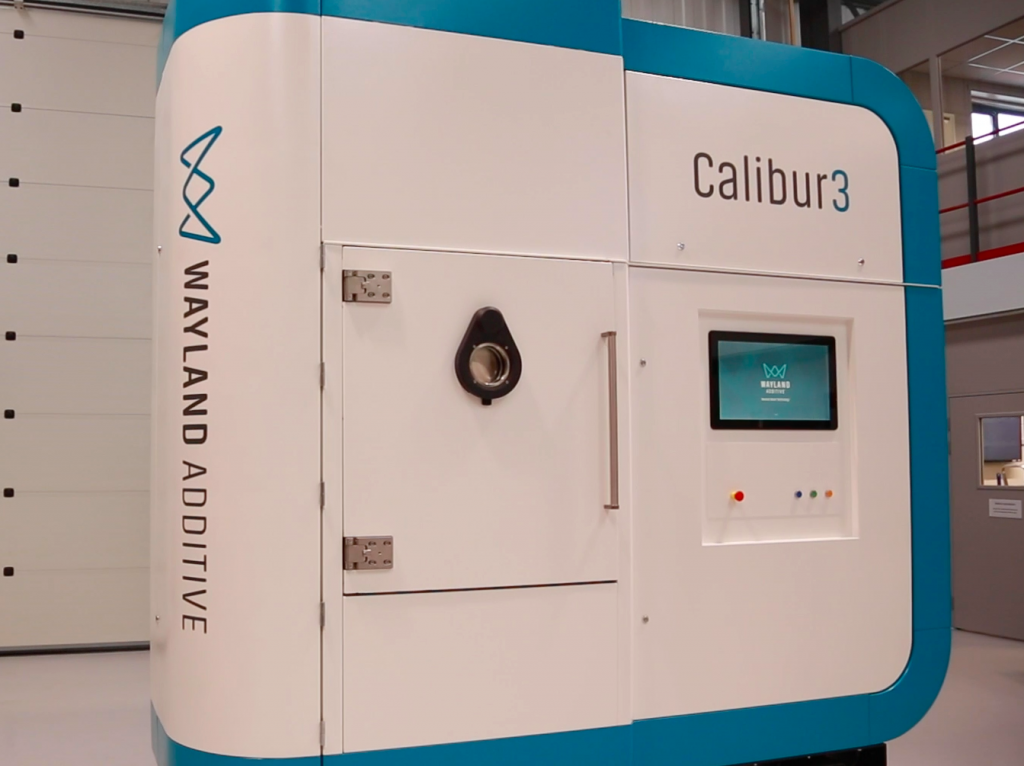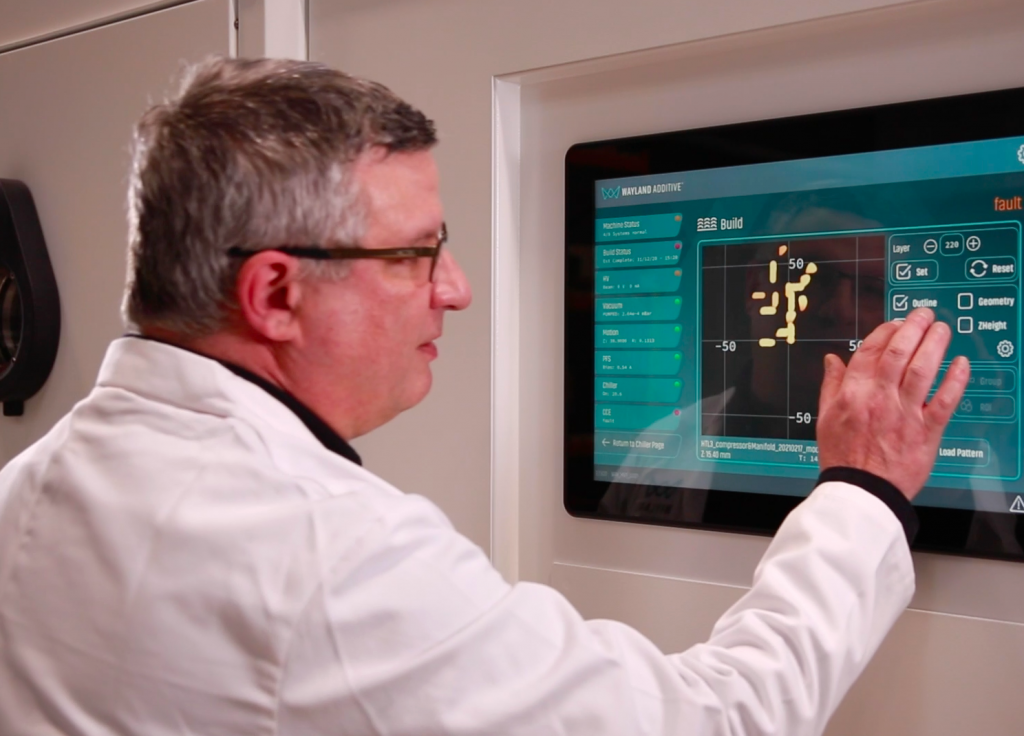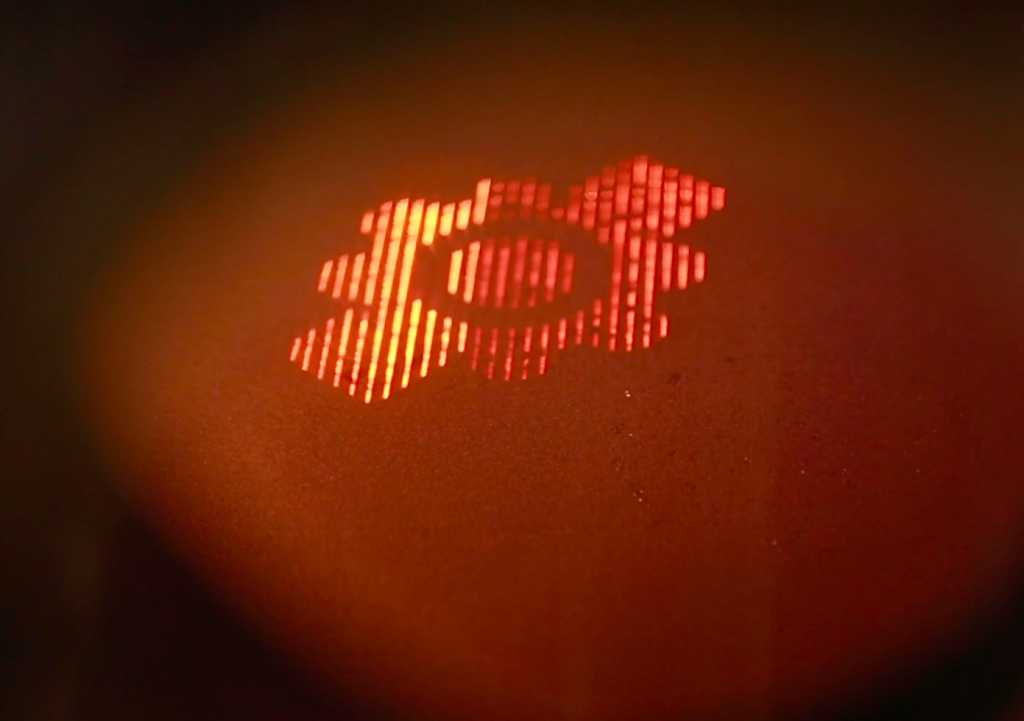After more than 18 months of teasers and development, UK-based 3D printer manufacturer Wayland Additive has finally launched its first-ever industrial system.
Featuring the firm’s novel NeuBeam electron beam melting (EBM) technology, the Calibur3 is capable of rapidly printing a broader range of alloys than conventional electron beam powered machines permit. Due to the system’s neutral-charge beam, it’s also able to fabricate large objects at higher densities, potentially allowing industrial adopters to produce more substantial parts, without worrying about stress-induced failures.
“All the hard work by the Wayland team that has gone into the development of the process and this new hardware platform has been realised today,” said Will Richardson, CEO of Wayland at the machine’s launch. “Now it is our mission to really demonstrate the difference that Calibur3 can make for metal AM applications.”

Stress-free metal 3D printing
Wayland has been working on its proprietary NeuBeam technology at its Huddersfield base since September 2019, when it received £3 million in funding to develop an EBM system for its industrial clientele. Essentially, the firm’s novel process aims to combine the benefits of laser and EB approaches, to enable users to engage in higher throughput metal 3D printing.
During conventional EBM additive manufacturing, systems can often accumulate charge that leads to an overheated build chamber, causing smoke that impacts upon final part density, this also reduces its compatibility with certain alloys. By contrast, NeuBeam represents a “charge neutral” process, meaning that it only heats sections of the powder bed where the part is currently being printed.
As a result, partially-sintered powder is no longer an issue, post-processing is kept short and simple, and a wider range of metals can be processed without risking the production of low-porosity parts. Crucially, thanks to its neutral EB set-up, NeuBeam technology is also able to 3D print residual stress-free objects, potentially making it a highly-repeatable method of fabricating larger parts than are currently feasible.

Wayland’s Calibur3 launch
Initially, Wayland unveiled the Calibur3 in April 2020, having licensed its Neubeam process from parent firm Reliance Precision. However, while the firm aimed to commercialize its new machine and fulfill six orders by the end of 2020, it was forced to postpone until January 2021 due to COVID-19 restrictions, before eventually releasing it in March 2021.
Although the full specifications of the Calibur3 haven’t yet been released, it’s known to feature a 300 x 300 x 450 mm build volume, that offers improved energy consumption compared to similar EB-based systems. Elsewhere, Wayland’s newly-launched metal 3D printer includes in-situ part monitoring capabilities, thanks to its integrated light scanning, electron imaging, and infra-red camera modules.
Leveraging this captured imaging data, users are effectively able to monitor the temperature of the entire bed during processing, and intervene whenever topology defects are detected. The system’s cameras also provide end-to-end traceability, further contributing to its credentials as a 3D printing unit, that’s capable of repeatedly producing end-use-ready parts.

According to Peter Hansford, Wayland’s Director of Business Development, the Calibur 3 provides a “leap forward” compared to existing technologies. “Because it overcomes the compromises that most companies have to contend with when using metal AM, they can now revisit applications that were previously seen as troublesome and begin developing projects with a clearer view of the process,” explained Hansford.
“The Calibur3 system and NeuBeam process offer a true third way that sits between SLM & EBM systems,” he added. “NeuBeam is a metal additive manufacturing process that saves both time and money from end-to-end, and one that can benefit commercial objectives through true production partnerships.”
Now that Wayland has broken cover with its new machine, it intends to host a more-detailed in-person launch event on May 19th 2021, and those interested in seeing the Calibur3 up close, can register to attend via the company’s website.
Shaking-up the EBM space
Despite the technology’s potential as a means of 3D printing high-strength parts, EBM is one of the industry’s less-common technologies. As a result, Wayland is entering a market that’s largely dominated by a small handful of companies such as GE and its Arcam line of systems, that meet the vast majority of client demand.
EB technologies have recently found extensive medical applications, and Chinese implant producer AK Medical opted to install eight Arcam EBM Q10plus 3D printers in August 2020. The company has been working with EBM since 2009, and in future, it intends to move beyond bone joints into other areas of personalized medicine.
Elsewhere, Wipro3D has partnered with the Indian Institution of Science (IISc) to develop its own proprietary EBM industrial 3D printer. Like Wayland’s Calibur3, the Indian system enables the production of higher density parts, and the company eventually aims to deploy it within end-use aerospace and defense applications.
To stay up to date with the latest 3D printing news, don’t forget to subscribe to the 3D Printing Industry newsletter or follow us on Twitter or liking our page on Facebook.
Are you looking for a job in the additive manufacturing industry? Visit 3D Printing Jobs for a selection of roles in the industry.
Featured image shows a Wayland engineer using the new Calibur3 EBM 3D printer. Photo via Wayland Additive.



